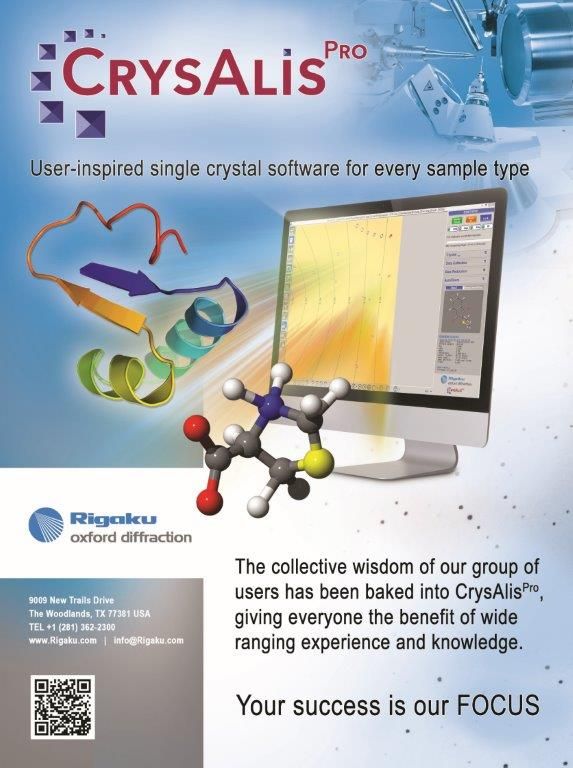

The reconstruction size of the empty holograms can be chosen independently, and is made a This requires the empty hologram reconstruction to cover the whole Specimen drift) of the reconstructed empty hologram. The normalization of the object holograms is made with the corresponding sub-region (tracked for For another, the reconstructed empty hologram is used to remove someĭistortions of the camera and the projection system of the microscope. There is no specimen drift in empty holograms.
SINGLECRYSTAL SOFTWARE DM3 FILE FULL
The empty hologram series is always reconstructed using the full image region. Alternatively, the raw alignment can be disabled by setting the enable_raw_alignment parameter Please note, that also the region used for raw alignment can be specified explicitly using the align_roi If this parameter is omitted, the whole hologram area is used for reconstruction. Here only theĬentral 7/8 of the holograms are used, the coordinates are given as left (128), top (128), right (1920), and bottom (1920): To determine these coordinates, by clicking on the respective corners of the rectangle in the panel. As shown in the above figure, the “Control” panel can be used The left, top, bottom, and rightīorders are provided to the program in pixel coordinates.

Is tracked and the same sub-region is extracted from the consecutive object holograms. During the raw-alignment step of the reconstruction, this region This region of interest (ROI) is definedĪs rectangular area in the first object hologram. This region is provided to the image program as roi parameter. In this cases it might be meaningful to only reconstruct a sub region of the hologram: If the specimen is drifting strongly, not the whole region of the holograms might be present in all acquisitions of Is given by the sideband_pos parameter as X and Y coordinates:Īnother parameter needed for the reconstruction is the region of the object holograms, which should be reconstructed. For the parameter file we need this position in pixels. You can toggle the mode by clicking on the little scalebar in the “Target” panel (in theįigure above directly left to “C:Image”). Showing the position in calibrated units (see left part of the above figure) or as pixel position (right part of theĪbove figure). The “Control” panel actually has two modes, either Visible, enable it in the “Window/Floating Window” drop down menu). With the marker positioned on the sideband, the coordinates of the sideband can be read in the “Control” panel (if not Thus we select the lower sideīand here, located in the 5 o’clock position. Wave passed the top side of the filament, the reference partial wave the bottom side. In this GaN example, the biprism filament was oriented in 8 to 2 o’clock orientation. In thisĬase, the correct sideband is the one, which is located on the side of the biprism filament, where the reference We use the convention that the phase shift increases with increasing specimen thickness. Sidebands is the correct one, depends on the convention you use for your phase and on which side of the biprism your Selecting the center of the desired sideband allows to read out the coordinates of the sideband. (if this toolbar is not visible, enable it in the “Toolbars” tab of the “Window/Customize…” dialog): This is the central tool button in the ROI toolbar looking like a cross-hair Micrograph you can use the point ROI tool. This carrier frequency is mostĬonveniently identified as the position of the sideband in one of the Fourier transformed empty holograms. The holoaverage program has to know the carrier frequency of your hologram. No MTF correction is performed in this case. If you don’t know the MTF of your detector, you can omit this parameter in the parameter file. For this tutorial we simply pass the provided MTF to the Thisĭescription is documented in Section Modulation Transfer Function. Parameterization of some simple functions, this parameterization can be directly provided to the program. As it is practice in most labs to describe the MTF as a MTF must be provided to the holoaverage program. The final parameter describing the microscope, is the modulation transfer function (MTF) of the camera. Propagation is performed, and the program averages all reconstructed holograms as they are. If no defocus parameters are provided, no Holograms can nevertheless propagated to a different focus afterwards. When wrong parameters are provided, this the target focus is not the Gaussian focus. Please note, that the reconstructions are propagated to the Gaussian focus (defocus 0 nm), as given by the defocus "defocus_first" : 20, "defocus_step" : - 2 ,


 0 kommentar(er)
0 kommentar(er)
